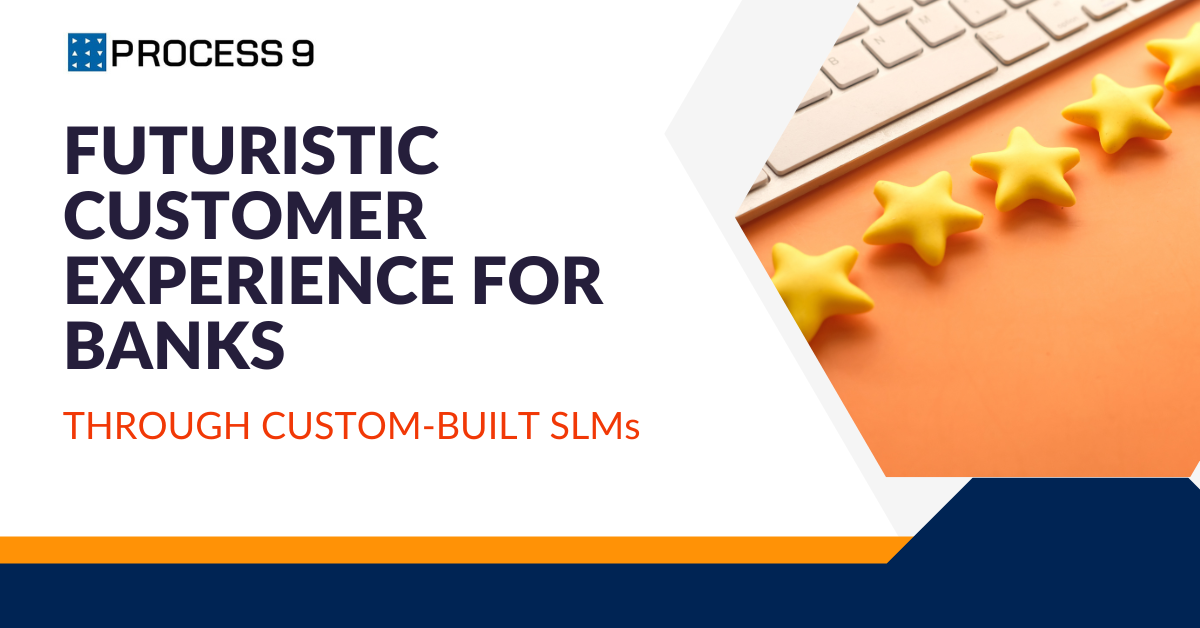In an industry driven by trust, personalization, and scale, the banking and financial services sector is undergoing a quiet revolution – one led by Small Language Models (SLMs). While much of the public narrative focuses on large language models (LLMs) like GPT-4 or Gemini, custom SLMs are emerging as the pragmatic powerhouse for customer service transformation in BFSI, especially in Asia.
Why the BFSI Sector Needs a New Kind of AI
Customer experience (CX) is a major differentiator in financial services. According to a 2023 McKinsey report, banks that improve CX can increase revenues by 10 to 15% and reduce service costs by 20% through digital self-service channels. However, generic solutions often miss the mark when it comes to industry-specific jargon, multilingual support, compliance requirements, and regional nuances.
This is where custom-built SLMs offer a compelling edge.
What Are Small Language Models and Why Are They a Game-Changer?
Small Language Models are purpose-built, lightweight NLP models trained on domain-specific data. Unlike massive LLMs that aim for universal intelligence, SLMs are specialized and fine-tuned for specific industries, workflows, or even departments. Think of them as laser-focused assistants rather than jack-of-all-trades.
In the context of banking, an SLM can be trained on:
- Internal support documentation
- Local languages and dialects
- Compliance guidelines
- Financial transaction formats
- Customer service chat logs
This specificity enables them to deliver faster, more accurate, and more compliant interactions at a fraction of the compute cost of LLMs.
Transforming the Banking Customer Journey
Hyper-Personalized Assistance
SLMs can understand customer history, financial behavior, and risk profiles to personalize responses. For example, a custom model for a retail bank in India can answer queries in Hindi or Bengali with context-aware recommendations for personal loans or savings schemes.
Automated Support That Works
Generic chatbots often fail to resolve issues beyond surface-level queries. SLMs, on the other hand, can be trained to understand product-specific queries like EMI deferrals, credit card reversals, or investment portfolio rebalancing with significantly higher accuracy. Gartner predicts that by 2026, banks using custom models for CX automation will achieve 30% higher first-contact resolution rates.
Omnichannel Consistency
SLMs can be embedded across customer touchpoints – mobile apps, WhatsApp, email, and IVR – ensuring that users get consistent, relevant responses no matter where they initiate interaction.
Language Inclusion at Scale
India’s BFSI sector serves a linguistically diverse customer base. SLMs trained on Indian language datasets can drastically reduce friction and boost accessibility. According to a KPMG-Google report, 70% of internet users in India prefer content in their native language. SLMs close this gap better than generic English-centric LLMs.
Lower Cost, Higher ROI
SLMs are far more resource-efficient than LLMs. Running inference on a smaller model requires significantly less computing power, meaning faster response times and lower operating costs. For banks operating at scale, this makes a big difference.
Moreover, the security benefits are substantial. With SLMs deployed on-premises or in private cloud environments, BFSI institutions can ensure data privacy and regulatory compliance, which is often not possible with generic cloud-based LLMs.
Real-World Adoption: What’s Happening Now
Several Asian banks have begun piloting or deploying SLMs. For instance, HDFC Bank has experimented with narrow AI models to automate backend query resolution. Meanwhile, DBS in Singapore is reportedly investing in custom-built language models for its customer-facing services. These are early signals of a broader shift.
Roadmap to Implementation
Banks looking to adopt SLMs should begin with:
- Identifying High-Volume Use Cases – Such as account queries, credit card issues, or loan eligibility.
- Creating a Proprietary Dataset – From internal knowledge bases and multilingual chat logs.
- Working with AI Partners – That specialize in BFSI-centric language modeling.
- Ensuring Governance – Especially around bias mitigation, fairness, and hallucination control.
Final Thoughts
Custom Small Language Models are no longer a research experiment. They’re a commercially viable, strategic investment for banks looking to lead in digital customer experience. For institutions in India and across Asia, where diversity in language and regulation is profound, SLMs offer the precision, flexibility, and control that generic models simply can’t match.
The future of banking doesn’t just speak AI – it speaks your customer’s language.
Curious to learn more? Talk to us!


